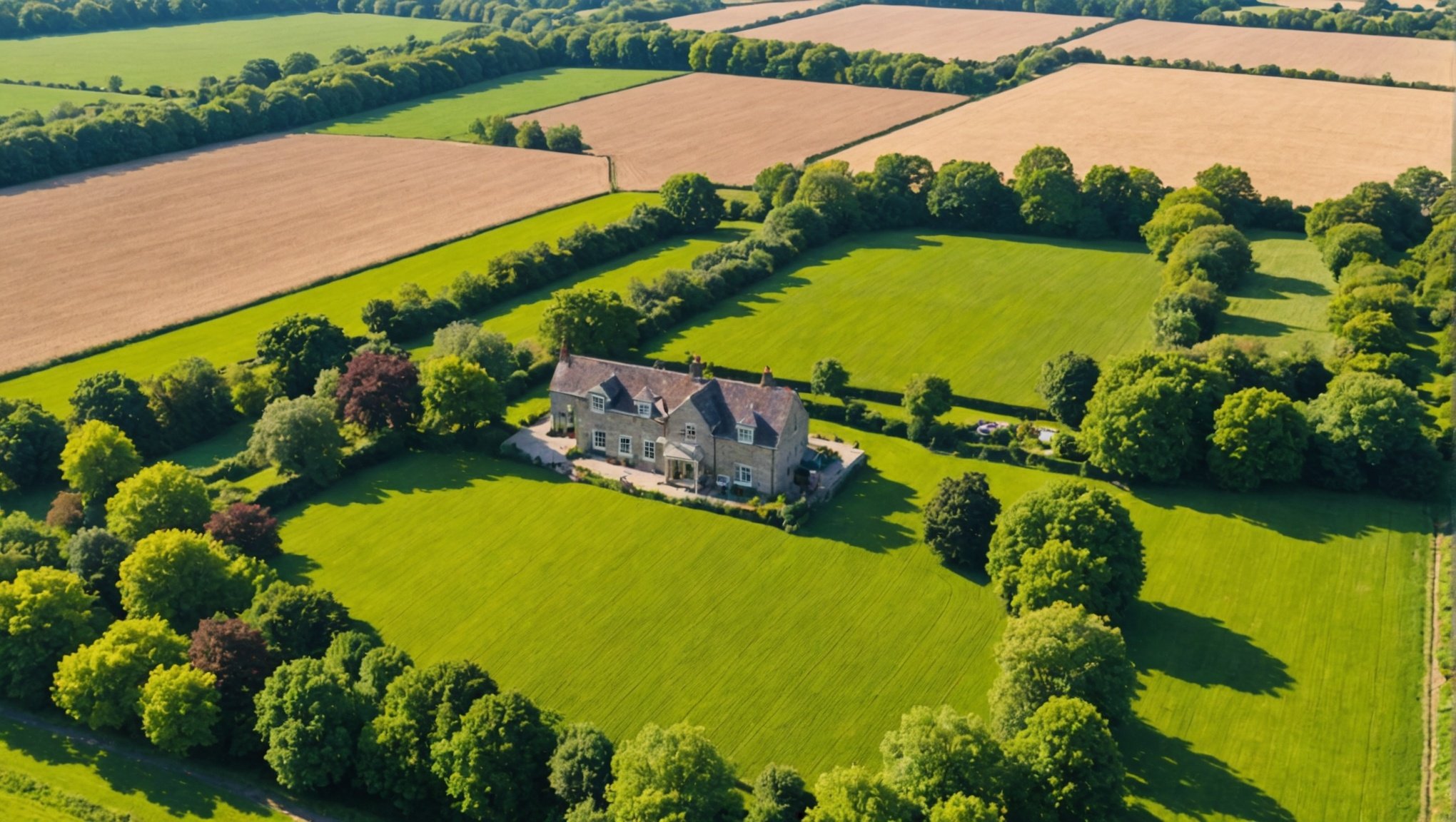Navigating the Legal Landscape: How to Transform Agricultural Land into Residential Property in the UK
Transforming agricultural land into residential property in the UK can be a complex and rewarding process, but it requires a thorough understanding of the legal landscape and the various regulations involved. Here’s a comprehensive guide to help you navigate this journey.
Understanding Permitted Development Rights
Permitted development rights are a crucial aspect of converting agricultural land into residential property. These rights allow certain types of development to proceed without the need for a full planning application, simplifying the process for landowners.
In parallel : Enhancing Urban Biodiversity: The Role of Creative Landscape Designs in New Real Estate Developments
Class Q: Agricultural Buildings to Dwellinghouses
One of the most significant permitted development rights for rural landowners is Class Q, which allows for the conversion of agricultural buildings into residential dwellings. As of May 21, 2024, the rules under Class Q have been revised to offer greater flexibility:
- Increased Floorspace and Dwellings: Landowners can now convert buildings into up to 10 dwellings, with a maximum cumulative floorspace of 1000 sqm. For example, you can create 10 dwellings of 100 sqm each or a mix of sizes, such as 6 dwellings at 150 sqm and 1 at 100 sqm.
- Building Size Limitations: The maximum size of a single dwelling has been reduced from 465 sqm to 150 sqm, but this still offers ample space for comfortable living.
- Road Access: The new rules mandate that the buildings must have suitable road access, ensuring that the converted dwellings are accessible and practical for residents.
- Green Belt and Rural Areas: Class Q allows for the delivery of homes in the Green Belt and other rural areas, bypassing the stringent planning hurdles typically associated with these regions.
Example of Class Q in Action
Imagine a rural estate with several old barns that are no longer in use for agricultural purposes. Under Class Q, the landowner can convert these barns into residential dwellings without needing full planning permission. This not only breathes new life into old buildings but also provides much-needed housing in rural areas.
Also to discover : Unlocking Efficiency: How Blockchain Technology Can Revolutionize Real Estate Sales Processes
Meeting Local Planning Requirements
While permitted development rights simplify the process, it’s essential to ensure that your development meets local planning requirements and regulations.
Section 106 Agreements
For larger developments, Section 106 agreements come into play. These agreements require a portion of the development to be set aside for affordable housing, which can be a significant factor in rural areas where local communities often have a pressing need for affordable housing.
- Retaining Control: By registering as a For Profit Registered Provider (FPRP), landowners can retain control over the affordable housing units, managing the rental properties and ensuring that the rental income covers costs and eventually generates a profit.
- Community Benefits: This approach not only increases the value of the land but also contributes to the well-being of the local community by providing essential housing.
Local Authority Considerations
When planning your development, it’s crucial to engage with the local authority to ensure compliance with all regulations.
- Planning Application: Even under permitted development rights, some aspects of your project may still require a planning application. It’s important to understand what needs to be submitted and when.
- Material Change of Use: Ensure that your development constitutes a material change of use, which is a key factor in determining whether permitted development rights apply.
Practical Steps for Landowners
Here are some practical steps to help landowners navigate the process of transforming agricultural land into residential property:
Identifying Suitable Buildings
- Assess the Condition: Evaluate the condition of the agricultural buildings to determine their suitability for conversion. Consider factors like structural integrity and the need for any significant repairs.
- Use Land Use Checklists: Utilize checklists, such as those provided by Searchland, to ensure that your proposed development meets all the criteria for Class Q conversions.
Engaging with Local Authorities
- Early Consultation: Engage with local planning authorities early in the process to understand any specific requirements or concerns they may have.
- Community Engagement: Involve the local community in the planning process to ensure that the development aligns with their needs and expectations.
Financial Considerations
- Development Costs: Calculate the development costs, including any necessary renovations, and ensure that these are covered by the rental income or other financial arrangements.
- Loan and Investment: Consider how you will finance the development. For example, registering as an FPRP can help in securing loans and managing future investments.
Table: Key Changes to Permitted Development Rights
| Class | Description | Key Changes as of May 21, 2024 |
|---|---|---|
| Class Q | Agricultural buildings to dwellinghouses | Increased to up to 10 dwellings, maximum cumulative floorspace of 1000 sqm, reduced maximum dwelling size to 150 sqm, and mandatory suitable road access |
| Class R | Agricultural buildings to flexible commercial use | Increased size thresholds and alternative uses permitted |
| Part 6, Class A & B | Agricultural development on units of 5 hectares or more and less than 5 hectares | Greater flexibility for farmers, increased size thresholds for new agricultural buildings |
Quotes and Insights from Experts
-
“Social housing is not a straightforward investment. There are plenty of regulatory requirements and certain behavioural expectations. It will also take time before you see any surplus rental income. But in the meantime, at least you get the satisfaction of knowing you’re helping to keep your rural community alive.”
-
This quote highlights the importance of understanding the complexities and long-term benefits of investing in affordable housing.
-
“The rural sector is an important part of the UK economy in terms of its ability to contribute to food security, boost rural housing and provide opportunities to tackle climate change.”
-
This emphasizes the broader economic and social benefits of rural development.
Checklist for Class Q Conversions
Here is a detailed checklist to help you ensure your development meets the Class Q criteria:
- Eligibility of Buildings:
- Are the buildings part of an established agricultural unit?
- Are the buildings suitable for conversion into residential dwellings?
- Floorspace and Dwellings:
- Does the development comply with the maximum cumulative floorspace of 1000 sqm?
- Does the development comply with the maximum number of dwellings (up to 10)?
- Building Size:
- Does each dwelling comply with the maximum size limit of 150 sqm?
- Road Access:
- Does the development have suitable road access?
- Planning Compliance:
- Has the development been checked against local planning policies and regulations?
- Community Engagement:
- Has the local community been consulted and involved in the planning process?
Transforming agricultural land into residential property in the UK is a viable and rewarding venture, especially with the recent changes to permitted development rights. By understanding Class Q and other relevant regulations, engaging with local authorities, and considering the financial and community aspects, landowners can successfully navigate this complex process.
Remember, the key to success lies in thorough planning, compliance with regulations, and a commitment to contributing positively to the local community. Whether you are converting old barns into homes or building new affordable housing, your efforts can significantly enhance the value of your land and the quality of life for rural residents.











